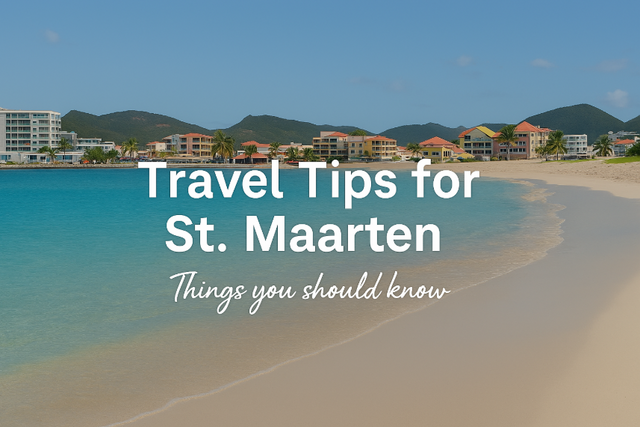Smart Travel Tips for Visiting St. Maarten

Planning your trip to St. Maarten? Whether it’s your first visit or your tenth, these local travel tips will help you navigate the island with ease, confidence, and a little extra insight that most tourists miss.
1. Currency & Cash Tips
St. Maarten uses two currencies: the Netherlands Antillean guilder (NAƒ) on the Dutch side and the euro (€) on the French side. But don’t stress over conversions—U.S. dollars are widely accepted on both sides, especially in shops, restaurants, taxis, and tours.
Pro Tip: Bring small denominations. Many local vendors, especially beach bars and markets, may not have change for large bills. ATMs are available but sometimes have long lines or higher withdrawal fees.
2. Transportation Know-How
Rental cars are popular for exploring independently, but driving is on the right-hand side and parking can be tight in town centers. Taxis are readily available but not metered; always confirm the fare before starting your ride.
Pro Tip: For cruise visitors, many shore tours include round-trip transport—no need to rent a car if you’re sticking close to port.
3. Tipping & Service
Tipping is customary and appreciated. Restaurants may add a service charge (often 10-15%), so check your bill before tipping extra. For taxis, porters, and guides, a small gratuity is a nice way to say thanks.
4. Safety & Local Etiquette
St. Maarten is generally safe for travelers. That said, use common sense: don’t leave valuables unattended on the beach, lock your car, and avoid isolated areas after dark.
Dress codes are casual island-wide, but beachwear should stay at the beach when entering shops and restaurants. Locals appreciate respectful, friendly engagement.
5. Sunscreen, Hydration & Island Time
The Caribbean sun is no joke. Apply reef-safe sunscreen liberally, drink plenty of water, and prepare for a slower pace. Businesses may open a bit later or take mid-day breaks—you’re on island time now.
6. Stay Plugged In
Electricity on the Dutch side is 110V (U.S. standard plugs); the French side uses 220V (European plugs). Some hotels offer dual outlets, but it doesn’t hurt to bring a small travel adapter if you plan to roam.
7. Bonus Tip: Ask a Local
The best beach? The tastiest Johnny cake? That secret snorkeling cove? Don’t be shy—locals love sharing their island when you ask with genuine interest.
Ready to explore more? Check out our full list of tours and experiences or visit the blog for deeper island insights.

